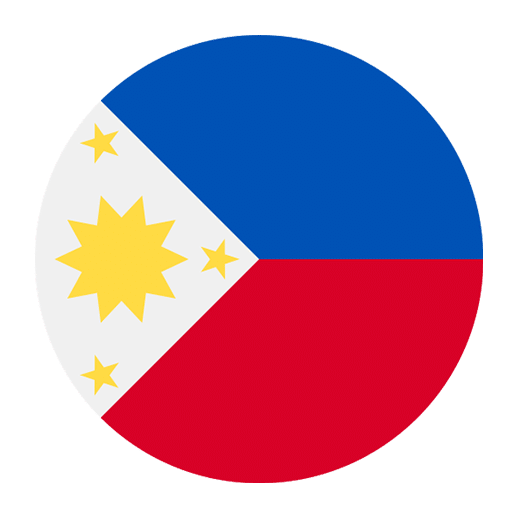The influence of American pop culture on various languages around the world is profound, and Tagalog, one of the primary languages spoken in the Philippines, is no exception. From movies and music to fashion and social media, American pop culture has permeated the linguistic landscape of Tagalog speakers, leading to a rich, evolving language that continues to adapt and grow. This article explores the multifaceted impact of American pop culture on Tagalog, providing insights into how this cultural interchange shapes communication, social norms, and identity.
Historical Context
To fully appreciate the impact of American pop culture on Tagalog, it is essential to understand the historical context of American influence in the Philippines. The Philippines was a colony of the United States from 1898 to 1946, following the Spanish-American War. This period of American colonization established a deep-rooted cultural and linguistic connection between the two nations. English became a co-official language alongside Filipino (which is based on Tagalog), and American customs, educational systems, and media began to integrate into Filipino society.
Language and Vocabulary
One of the most direct impacts of American pop culture on Tagalog is the incorporation of English vocabulary into everyday speech. This phenomenon, often referred to as “Taglish” (a blend of Tagalog and English), is prevalent in both formal and informal settings. For instance, it is common to hear phrases like “Magchill tayo sa weekend” (Let’s chill this weekend) or “Nagwork ako kanina” (I worked earlier). This blending of languages is not merely a result of historical colonization but is continuously fueled by the influx of American media, such as movies, TV shows, and music, which introduces new slang and expressions.
Adoption of Slang and Idioms
American slang and idioms frequently make their way into Tagalog, especially among the youth. Words like “cool,” “awesome,” and “selfie” have seamlessly integrated into the vernacular. Moreover, idiomatic expressions such as “break a leg” or “spill the tea” are often used in their English form without direct translation, as they convey a sense of modernity and global connectedness.
Digital Communication
The rise of social media platforms like Facebook, Twitter, and Instagram, which are predominantly American, has further cemented the use of English in digital communication. Tagalog speakers, especially the younger generation, often mix Tagalog and English in their posts, comments, and messages. This practice not only makes communication more dynamic but also reflects the global nature of online interactions.
Music and Entertainment
American pop music has a significant influence on the musical landscape of the Philippines. Artists like Taylor Swift, Beyoncé, and Justin Bieber enjoy massive popularity, and their songs often dominate the airwaves. This exposure to American music introduces new vocabulary and expressions to Tagalog speakers, who may adopt these terms into their daily language.
Local Adaptations and Covers
Filipino artists frequently create Tagalog covers of popular American songs or incorporate English lyrics into their original compositions. This practice not only showcases the versatility of Tagalog as a language but also bridges the gap between local and global musical tastes. For example, a Tagalog cover of an American hit song may retain some of the original English lyrics, making the song relatable to a broader audience.
Influence on Local Genres
American music genres, such as hip-hop, R&B, and pop, have also inspired local Filipino artists to experiment with similar styles. This cross-cultural musical exchange often leads to the creation of new genres that blend Tagalog lyrics with American musical elements, resulting in a unique fusion that appeals to both local and international audiences.
Film and Television
American movies and TV shows have a far-reaching impact on Tagalog speakers, influencing not only language but also cultural norms and values. Hollywood blockbusters and popular TV series are widely accessible in the Philippines, and many Filipinos consume these media with avid interest.
Dubbing and Subtitles
While some American movies and TV shows are dubbed in Tagalog, many are available with English subtitles. This accessibility allows Tagalog speakers to practice their English comprehension skills while enjoying their favorite content. Additionally, the exposure to American idioms, slang, and speech patterns through these media helps Tagalog speakers become more familiar with contemporary English usage.
Local Productions
The influence of American film and television is also evident in local Filipino productions. Many Filipino TV shows and movies adopt American storytelling techniques, genres, and character archetypes. For example, the telenovela format, which is popular in the Philippines, often mirrors the structure of American soap operas and drama series. This adaptation not only makes the content more relatable to local audiences but also introduces American cultural elements into the narrative.
Fashion and Lifestyle
American pop culture significantly influences fashion and lifestyle trends in the Philippines. The styles and preferences of American celebrities, as seen in movies, TV shows, and social media, often become aspirational for many Filipinos.
Clothing and Accessories
American fashion brands and trends have a considerable presence in the Filipino market. Clothing styles popularized by American pop stars and influencers are often emulated by Filipino youth. Brands like Nike, Levi’s, and Forever 21 enjoy widespread popularity, and their products are commonly seen in the wardrobes of many Filipinos.
Beauty Standards
The American beauty industry also impacts Filipino beauty standards and practices. Makeup techniques, skincare routines, and beauty products endorsed by American celebrities and influencers are often adopted by Filipinos. This influence extends to language as well, with English terms for beauty products and techniques frequently used in Tagalog conversations.
Social Media and Internet Culture
The dominance of American social media platforms has a profound effect on how Tagalog speakers communicate and interact online. Platforms like Facebook, Twitter, Instagram, and TikTok, which are American in origin, shape digital culture in the Philippines.
Memes and Viral Content
Memes and viral content originating from American internet culture often find their way into Filipino social media circles. These memes are sometimes adapted to include Tagalog text or references to local culture, creating a hybrid form of humor that resonates with Filipino users. The use of English in these memes also reinforces the blending of languages in online communication.
Influencers and Trends
American social media influencers and trends significantly impact Filipino online behavior. Hashtags, challenges, and viral trends that start in the United States often gain traction in the Philippines. Filipino influencers and content creators frequently participate in these trends, further spreading American cultural elements within the local digital landscape.
Societal and Cultural Implications
The pervasive influence of American pop culture on Tagalog extends beyond language and affects various aspects of Filipino society and culture. This cultural exchange has both positive and negative implications.
Positive Impacts
The integration of American pop culture into Tagalog can lead to greater cultural diversity and global connectedness. Exposure to different cultural perspectives broadens horizons and fosters a more inclusive worldview. Additionally, the ability to communicate in both Tagalog and English can enhance job prospects and educational opportunities for Filipinos, as English is often seen as a global lingua franca.
Challenges and Concerns
However, the dominance of American pop culture also raises concerns about cultural homogenization and the potential erosion of traditional Filipino values and customs. The preference for American media and products may lead to a diminished appreciation for local culture and heritage. Moreover, the widespread use of Taglish, while practical, can sometimes result in the loss of linguistic purity and the dilution of the Tagalog language.
Conclusion
The impact of American pop culture on Tagalog is a testament to the dynamic and ever-evolving nature of language and culture. While the influence of American media, fashion, music, and digital platforms has introduced new vocabulary, expressions, and trends into Tagalog, it has also sparked discussions about cultural identity and preservation. As Tagalog continues to adapt and integrate elements of American pop culture, it remains a vibrant and resilient language that reflects the rich cultural tapestry of the Philippines. Embracing this cultural interchange while valuing and preserving local traditions will ensure that Tagalog remains a vital and expressive means of communication for generations to come.

